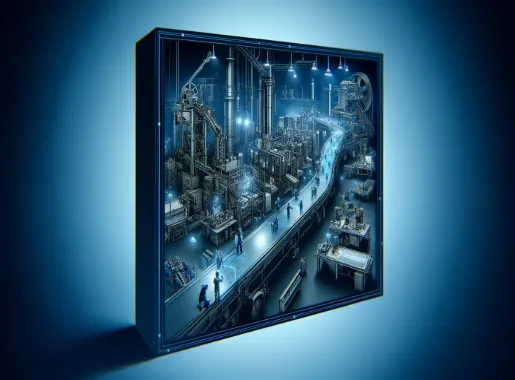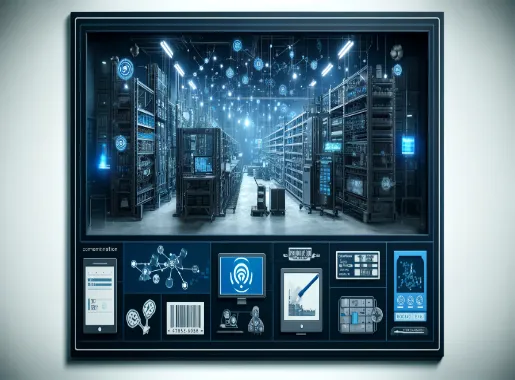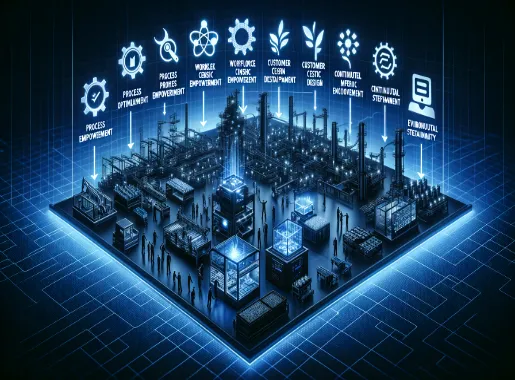What Is RMA In Manufacturing - Understanding The Basics
In manufacturing, only some products hit the mark right off the assembly line, leading to the inevitable need for returns. This is where Return Merchandise Authorization (RMA) comes into play. RMA is a critical process that manufacturers and businesses use to manage these returns smoothly. It's not just about sending items back; it's about keeping the lines of communication and trust open between manufacturers and their clients. When products fall short with RMA, there's a straightforward process for addressing these issues, ensuring high customer satisfaction. It underscores a company's commitment to quality and dedication to making things right.
Understanding RMA in the Manufacturing World
In the fast-paced manufacturing sector, where precision meets customer expectations, Return Merchandise Authorization (RMA) plays a crucial role. Think of RMA as the green light manufacturers give for products to make their way back for a second look. It's a critical step that ensures every product returned was expected and can be adequately assessed for issues. Top Manufacturing Companies In Mexico make RMA a crucial step of their process.
Why RMA Matters
Have you ever snagged that gadget you've been dreaming about, only to find it doesn't work as promised? Enter RMA. The process assures the customer that your concerns are valid and will be addressed. For manufacturers, RMA is more than just accepting a return; it's a chance to dive deep into potential issues. Each returned item is a puzzle piece, offering insights into larger patterns that might need fixing. This process isn't just about correcting errors; it's about learning from them, enhancing quality, and ensuring the customer's faith in the product remains unshaken.
Different Names, Same Goal
You might come across terms like Return Authorization (RA) or Return Goods Authorization (RGA) alongside RMA. Though they vary in wording, their core purpose remains steadfast: to streamline the returns process. No matter the label, the aim is precise – to make returns seamless for customers while providing manufacturers with valuable feedback for improvement. This shared goal underlines the importance of a well-managed returns process, which fosters trust and loyalty in any customer-manufacturer relationship.
The RMA Process
The Return Merchandise Authorization (RMA) process is like setting sail through a well-charted sea; it requires precision, understanding, and a precise sequence of steps. Here's a closer look at the typical journey an RMA takes, from when a product is identified as non-conforming to the following resolution.
Initial Request
It all starts with a hiccup. A client spots a product that needs to meet their expectations or the standards promised. The first step is reaching out to the manufacturer with details about the product and the issue at hand. This is where the dialogue begins, setting the stage for the RMA process. The client's explanation of the problem paves the way for an RMA request, marking the first step in addressing the concern.
RMA Issuance
Upon receiving the client's request, the manufacturer takes the baton and reviews the claim to verify the details provided. This is a crucial step in ensuring that the request is valid and that the issue falls within the scope of RMA policies. Once verified, the manufacturer issues a unique RMA number. This number is not just a formality; it's a tracker, a beacon that will follow the product through its return journey, ensuring every step is recorded and nothing falls through the cracks.
Product Return
The client prepares the product with the RMA number for its return voyage. This isn't merely about putting the item in a box and shipping it back; it's about securing it properly, ensuring the RMA number is prominently displayed, and sending it off in a way that reaches the manufacturer safely. This step is about trust and responsibility, handling the product carefully even when it leaves the client's hands.
RMA Inspection & Resolution
The product's arrival at the manufacturer's end marks a new phase. It's time for inspection, a thorough examination to confirm the reported issue and uncover its root cause. This isn't just about identifying what went wrong; it's about understanding why, a critical step in ensuring such problems are mitigated in the future.
Communication & Completion
Throughout the RMA process, keeping the client in the loop is vital. Manufacturers ensure transparent communication, updating the client on the progress and outcome of their request. The RMA process is considered complete once the issue is resolved and the client is informed. This final step underscores the entire process's commitment to customer satisfaction and quality assurance. The RMA process, a structured approach from the initial request to the final resolution, reflects the manufacturing industry's dedication to excellence and reliability. It's a testament to the importance placed on not just solving problems.
Benefits of RMA in Manufacturing
The Return Merchandise Authorization (RMA) process is more than just a procedural necessity; it's a strategic advantage that benefits manufacturers and their clients. RMA offers many benefits that enhance quality control, bolster customer satisfaction, and streamline operations by ensuring a systematic approach to handling returns. Find Manufacturers In Mexico who follow the RMA process with precision.
For Manufacturers:
- Improved Quality Control: One of the standout benefits of an RMA system is the enhanced ability to identify and address recurring issues. Each return is a chance to delve into what went wrong and why, turning problems into powerful insights for quality improvement.
- Enhanced Customer Satisfaction: Customer satisfaction naturally improves when product issues are resolved efficiently and effectively. An RMA process ensures that customers feel heard and valued, fostering a positive perception of the brand and encouraging loyalty.
- Reduced Warranty Costs: By managing returns and resolutions more effectively, manufacturers can significantly reduce the costs associated with warranty claims. A streamlined RMA process helps minimize unnecessary expenses, contributing to a healthier bottom line.
For Clients:
- Streamlined Return Process: For clients, the clarity and simplicity of a well-defined RMA process mean returning non-conforming products is hassle-free. Clear steps and transparent communication remove the uncertainty and frustration often associated with returns.
- Faster Resolution of Issues: With an RMA process, clients can expect quicker turnarounds on repairs, replacements, or credits. This efficiency not only minimizes downtime but also enhances the overall customer experience.
- Improved Supplier Relationships: Effective RMA handling plays a significant role in building trust between clients and manufacturers. When issues are addressed promptly and professionally, it strengthens the supplier-client relationship, laying the groundwork for long-term collaboration.
The RMA process is a testament to a manufacturer's commitment to quality and customer service. For manufacturers, it's a tool for continuous improvement and cost management. It offers peace of mind and a support guarantee for clients should anything go awry. In the grand scheme of manufacturing, RMA is a cornerstone of successful, customer-focused operations, enhancing the relationship between manufacturers and their clients through trust, efficiency, and mutual respect. You can also learn aboutthe Benefits Of Manufacturing In Mexico.
Ready to optimize your RMA process?
RMA is the cornerstone of trust and quality in manufacturing, ensuring products meet the highest standards. It benefits manufacturers by enhancing quality control and customer satisfaction while offering clients a seamless return process. This symbiotic system fosters improved relationships and operational efficiency. Ready to optimize your RMA process? Partner with AMREP Mexico for expert guidance and enjoy our Supplier management services Elevate your manufacturing standards and customer service—reach out to us now.


